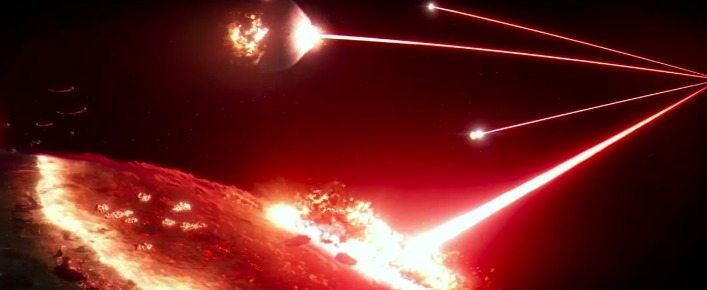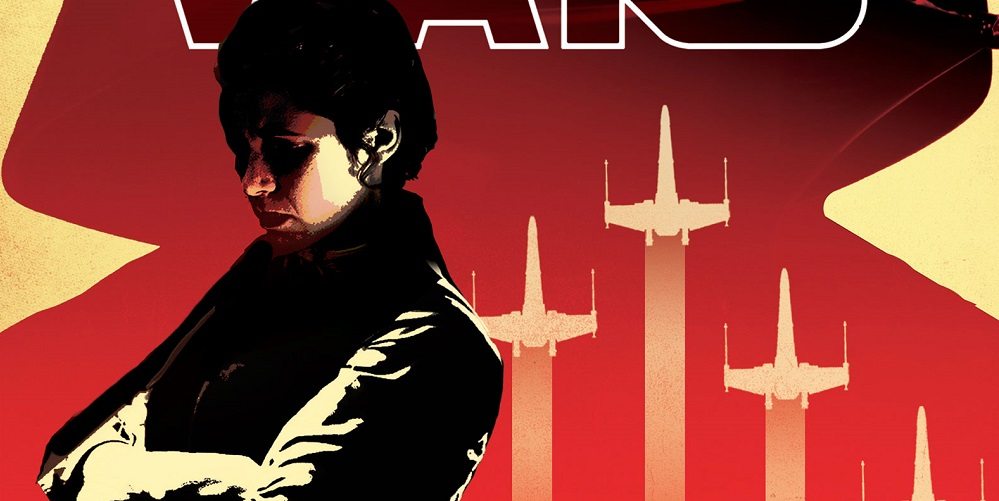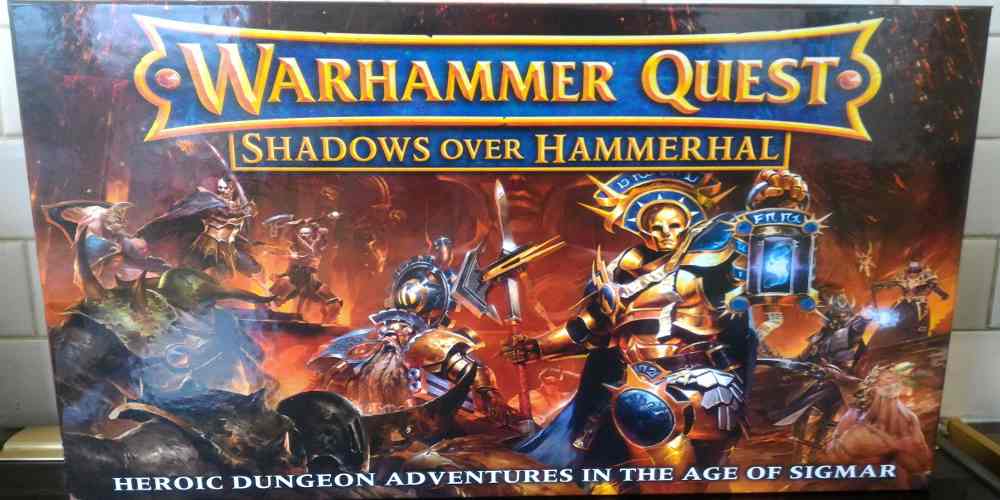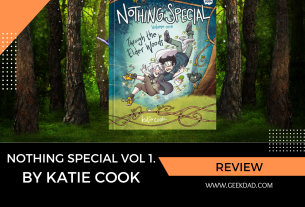
If you’re a long-time reader of Star Wars novels or have spent any time exploring the old Expanded Universe (now Legends), you’re probably well aware that the books were…hit or miss. The good news is that, since Disney and Lucasfilm swept 30 years of history under the rug and rebooted canon, almost all of the original novels that comprise the new “expanded universe” have been surprisingly good if not outright excellent.
I’m on record as saying that, until now, Claudia Gray’s Lost Stars has been the best of the bunch, and if you’re going to read only one new Star Wars book, it should be that one. Therefore, it was with much excitement that I cracked open Gray’s newest Star Wars book, out today from Del Rey. Star Wars: Bloodline is set in the years before The Force Awakens, focuses squarely on Senator Leia Organa, and happens to be the best Leia story ever told.
It also turns out to be required reading for the new Star Wars universe and answers several of the biggest questions you likely had after watching The Force Awakens, namely: Why is there both a Republic AND a Resistance?
A mostly spoiler-free review below.
“Leia had finally tasted adventure again for herself. She had something meaningful to do. She’d regained a sense of purpose, and after far too long.”
The first thing you should know about Bloodline is that the book unabashedly, unashamedly centers on Leia. She is very clearly the hero – and rightfully so. Gray makes great strides in bridging the gap between the Rebel leader Princess Leia we saw at the end of Return of the Jedi and the Resistance leader General Leia we saw in The Force Awakens.
In fact, aside from C-3PO (who’s up to 7 million forms of communication, by the way), Leia is practically the only familiar character from the films here. There is no Luke, there are no Jedi, there is no Empire, there is no First Order, and even Han only makes a few brief appearances. What is there? A heavy focus on Senator Leia, who finds herself at the center of an espionage-laden mystery that has serious ramifications for the entire galaxy. Seriously, what’s not to love?
In a story that’s rife with underworld kingpins, treacherous politicians, and Imperial loyalists, Bloodline also sows the seeds of both the First Order and the Resistance, and it reveals the continuing destructive effects Darth Vader has had on the galaxy in general and on Leia in particular.
The story takes place several years before the events of The Force Awakens and presents a mostly detached Leia serving in the Galactic Senate of the New Republic. Planning her retirement from the Senate and longing for the days of the Rebellion, Leia finds herself simply going through the motions on Hosnian Prime with no real purpose.
Oh, you remember Hosnian Prime, right? The home planet of the New Republic government?

Bloodline tells us why this was kind of a big deal (beyond the obvious) and explains why the First Order was so keen on taking them out first.
Gray wastes no time putting events into motion as Leia almost immediately jumps at the opportunity to escape the monotony of the Senate and investigate claims of organized crime and active cartels operating on a planet under the jurisdiction of the New Republic. In short, she jumps at the chance to do something. From there, she quickly begins unraveling a criminal plot that goes deeper than anyone imagined.
Much of Bloodline concerns itself with the political machinations and bureaucracy of the New Republic Senate, which means it shares a lot in common with the prequel trilogy, but fear not: Claudia Gray writes backroom deals, partisan gridlock, and power-hungry politicians much more compellingly than Lucas did. And she does so in a way that makes the major events of Bloodline hit surprisingly close to home. There are uncomfortable parallels with the current U.S. political climate, which casts a disturbingly familiar pall over everything.
“Populists and Centrists agreed on only one point these days: Compromise was for the weak. . . . Failing to help those in need was bad enough for a government that claimed to represent and protect everyone. But even those too shortsighted to understand that ought to realize that one world’s difficulties often spread offplanet and magnified exponentially.”
You may have noticed that a silhouette of Darth Vader dominates the cover of Bloodline, which is because his memory casts a long shadow over everything that happens in the book. His influence is still acutely felt – by Leia, by Ransolm Casterfo (who becomes an uneasy political ally from across the aisle), and by the burgeoning threat that’s gaining strength in the shadows.
Gray also takes on a few other pesky issues that continually crop up among fans. Remember the whole “Rey thinks Luke is a myth” thing from The Force Awakens? It had only been 30 years since the Battle of Endor, so how could something become a myth in that space of time? Fairly easily, as it turns out. Gray make a sideways acknowledgment to the somewhat tongue-in-cheek theory that everyone in the Star Wars universe is illiterate.
“Something was written on the paper streamer on her plate. Actual writing. Virtually nobody wrote any longer; it had been years since Leia had seen actual words handwritten in ink on anything but historical documents.”
And because of this reliance on holograms and oral history, people and events slip into legend with alarming regularity. Indeed, consider the following bit of senatorial bluster (which, honestly, sounds like something that might be said in the U.S. Congress today):
“To this day, they’ve never adequately explained what happened to the first Death Star. Yes, we all know the big story, Luke Skywalker single starfighter blah blah blah, but honestly, does that sound credible to you? The Empire had the greatest engineers in the galaxy, and the Death Star was their finest achievement. There’s no way it could’ve been vulnerable to that kind of attack.”
There’s no truth in the Star Wars universe that a few years can’t turn into mythology. Which explains so much.
In all seriousness, though, Bloodline sometimes feels like a Princess Leia Greatest Hits story. Her torture on the Death Star and the destruction of Alderaan both play a crucial role, her murder of Jabba the Hutt plays a significant role (which also earned her the most kick-ass epithet ever), and we even see the return of an Ubese bounty hunter (Boushh) costume. None of this is a criticism. If this is a Princess Leia Greatest Hits story, then I welcome it with open arms.
And if you thought Claudia Gray did an amazing job with new characters Thane Kyrell and Ciena Ree (Lost Stars), which she most definitely did, then you’ll fall in love with Leia’s new squad: Greer Sonnel, Korr Sella, and Joph Seastriker. Gray writes with immediacy and intimacy but doesn’t lose sight of the bigger picture. Her details build the world she’s creating, and you’ll find yourself swept along on a tidal wave of emotion.
This is the most personal, relevant, and poignant Star Wars book I’ve ever read.
“How was it that danger felt more like home?”
Star Wars: Bloodline is available now, just in time for Star Wars Day. If you prefer to listen to your books, there is also an audiobook version of Bloodline, narrated by January LaVoy. LaVoy does an incredible job giving depth and humanity to Leia, and she does a phenomenal job bringing her to life. My only complaint is that her male voices, including Han’s, all tend to sound alike. But in Bloodline, which is dominated by female characters, this is hardly a major criticism. The production value of the audiobook is quite high, as is to be expected. Background music and sound effects add vibrancy and dramatic tension to most scenes, and it’s an absolute pleasure to listen to.
(Disclosure: GeekDad received review copies of the Bloodline book and audiobook. All opinions remain our own.)




